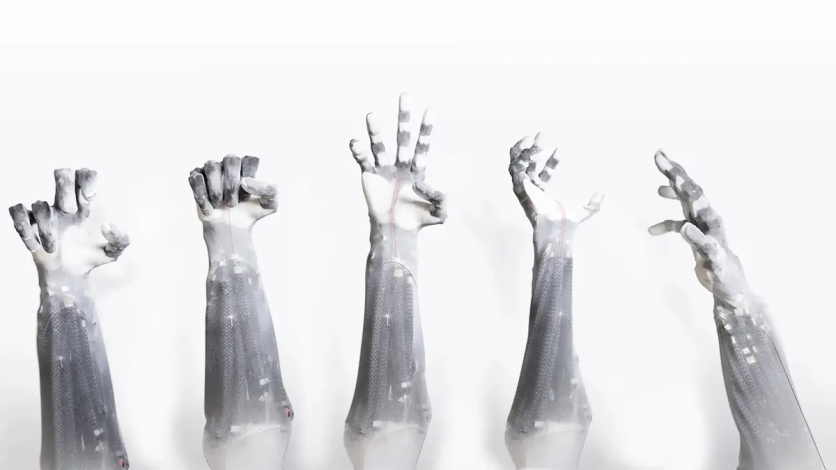Clone Robotics has gone to extraordinary lengths to ensure that its "intelligent androids" would have some of the most human-like hands in the industry, as reported first by New Atlas.
The company claims to have developed the world's first biomimetic hand (model number V15), which can hold things with a grip like a human hand, from a tennis ball to an active drill machine.
Human in Appearance and Operation
The robotic hand's fingers, thumb, and internal muscles resemble a real human hand in appearance and operation.
These muscles are an adaptation of a McKibbin muscle by the Clone team and they are essentially mesh tubes with balloons inside of them. When the balloon's radial expansion expands, which is normally produced by a pneumatic or hydraulic pump external to the muscle, the mesh is forced to contract longitudinally.
Clone preferred not to employ large external pumps; instead, the team sought to create a muscle that could be electrically stimulated to contract with some degree of control.
Hence, the team came up with the concept of maintaining the balloon's fluid fill at one point acetaldehyde, while passing a strong heating element through it.
Acetaldehyde quickly boils when a current is applied increasing the atmospheric pressure at 20 °C (68 °F) to 6.6 times that pressure at 70 °C (158 °F), as per New Atlas.
Read Also : Sarcos is Developing a 'Human-Like' Robotic Hand to Help the US Navy in Safely Defusing Mines
27 Degrees of Freedom
Clone created a skeleton out of a collection of largely human-like bones with hinged joints that allowed for a range of mobility as similar to the human hand as possible.
The team claimed that the device had approximately 27 degrees of freedom, the same as human hands, with built-in wrist and thumb rotations.
All of these movements are controlled by a complex network of muscles and tendons that run the length of the forearm and through the hand.

News Atlas claimed that in the current prototype, Clone has returned to a simple hydraulic system to power the muscles. Pressure is distributed through a 500-watt, 145-psi water pump via a series of 36 electro-hydraulic valves, each with a pressure sensor.
Magnetic sensors are also included to provide the brain controlling it with data on joint angles and velocities.
By the end of 2022, the company promises to begin supplying hand kits to customers, albeit a cost has not yet been announced.
The result will be a rigid spine throughout the entire torso, along with 124 muscles in the neck, hands, chest, shoulders, arms, and upper back. It will be moving forward on a "locomotion platform" while carrying its battery pack.
This article is owned by Tech Times
Written by Joaquin Victor Tacla
ⓒ 2025 TECHTIMES.com All rights reserved. Do not reproduce without permission.




